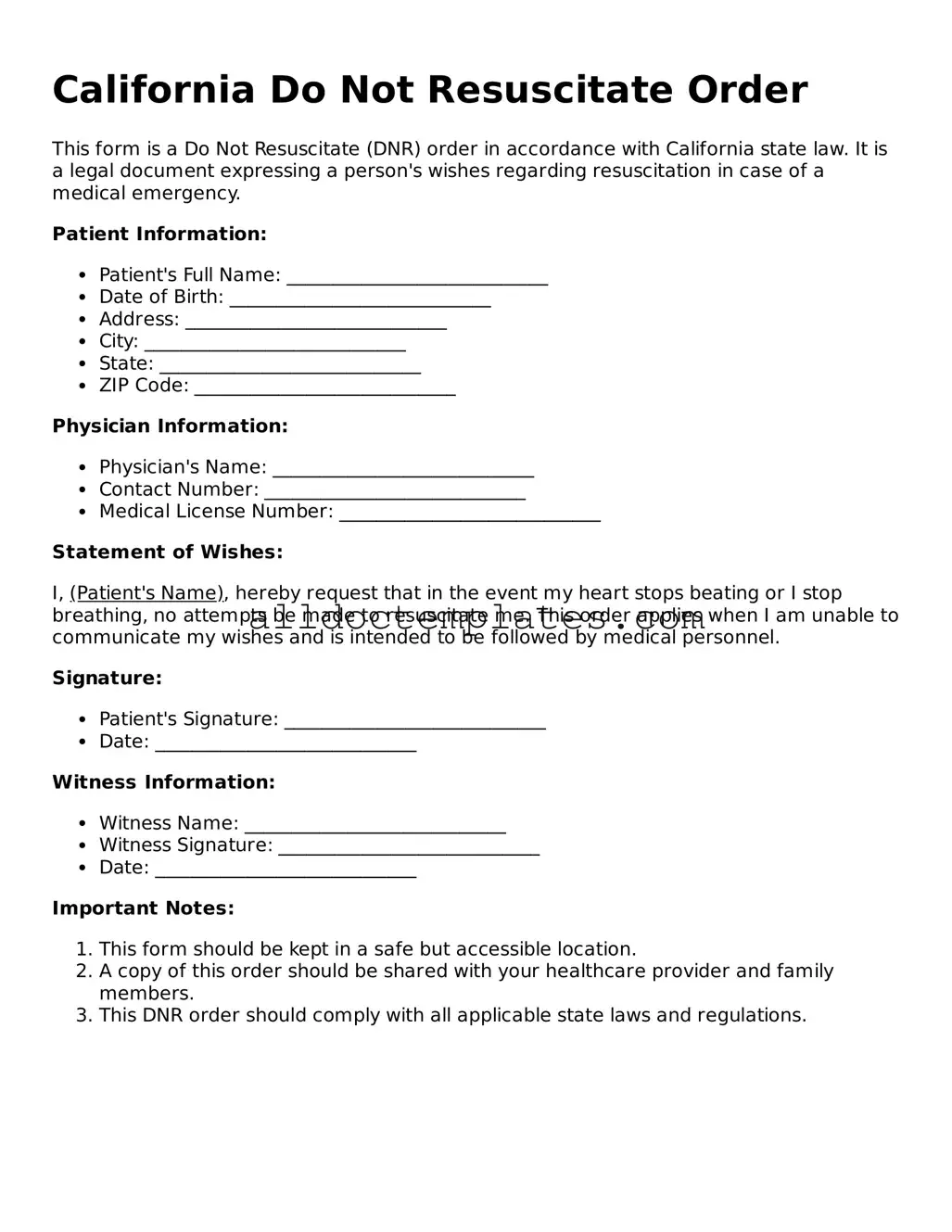California Do Not Resuscitate Order
This form is a Do Not Resuscitate (DNR) order in accordance with California state law. It is a legal document expressing a person's wishes regarding resuscitation in case of a medical emergency.
Patient Information:
- Patient's Full Name: ____________________________
- Date of Birth: ____________________________
- Address: ____________________________
- City: ____________________________
- State: ____________________________
- ZIP Code: ____________________________
Physician Information:
- Physician's Name: ____________________________
- Contact Number: ____________________________
- Medical License Number: ____________________________
Statement of Wishes:
I, (Patient's Name), hereby request that in the event my heart stops beating or I stop breathing, no attempts be made to resuscitate me. This order applies when I am unable to communicate my wishes and is intended to be followed by medical personnel.
Signature:
- Patient's Signature: ____________________________
- Date: ____________________________
Witness Information:
- Witness Name: ____________________________
- Witness Signature: ____________________________
- Date: ____________________________
Important Notes:
- This form should be kept in a safe but accessible location.
- A copy of this order should be shared with your healthcare provider and family members.
- This DNR order should comply with all applicable state laws and regulations.
